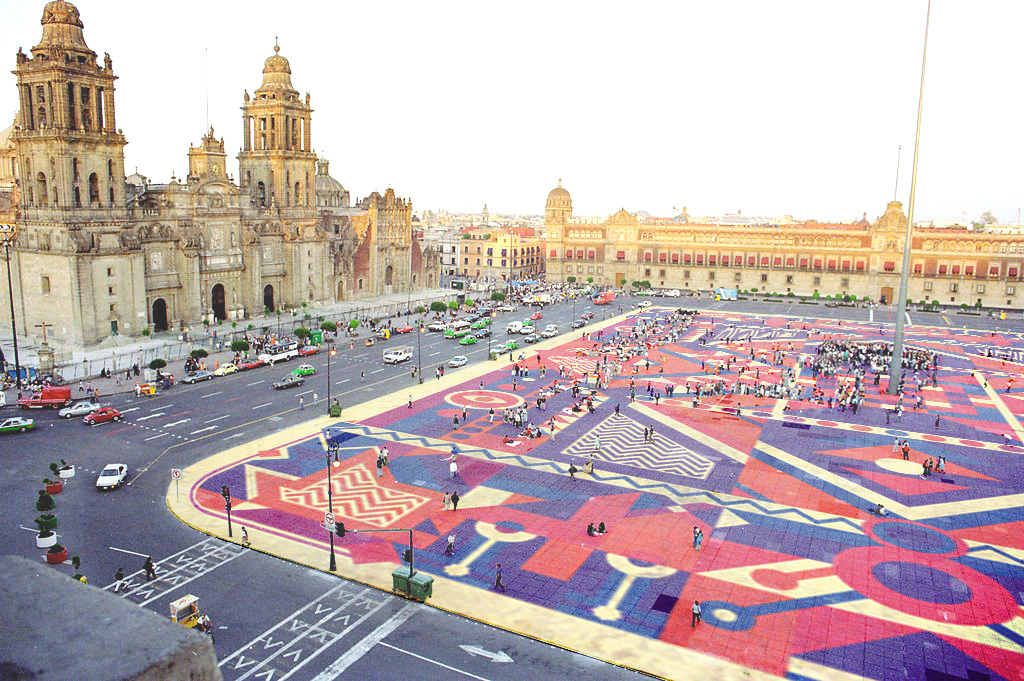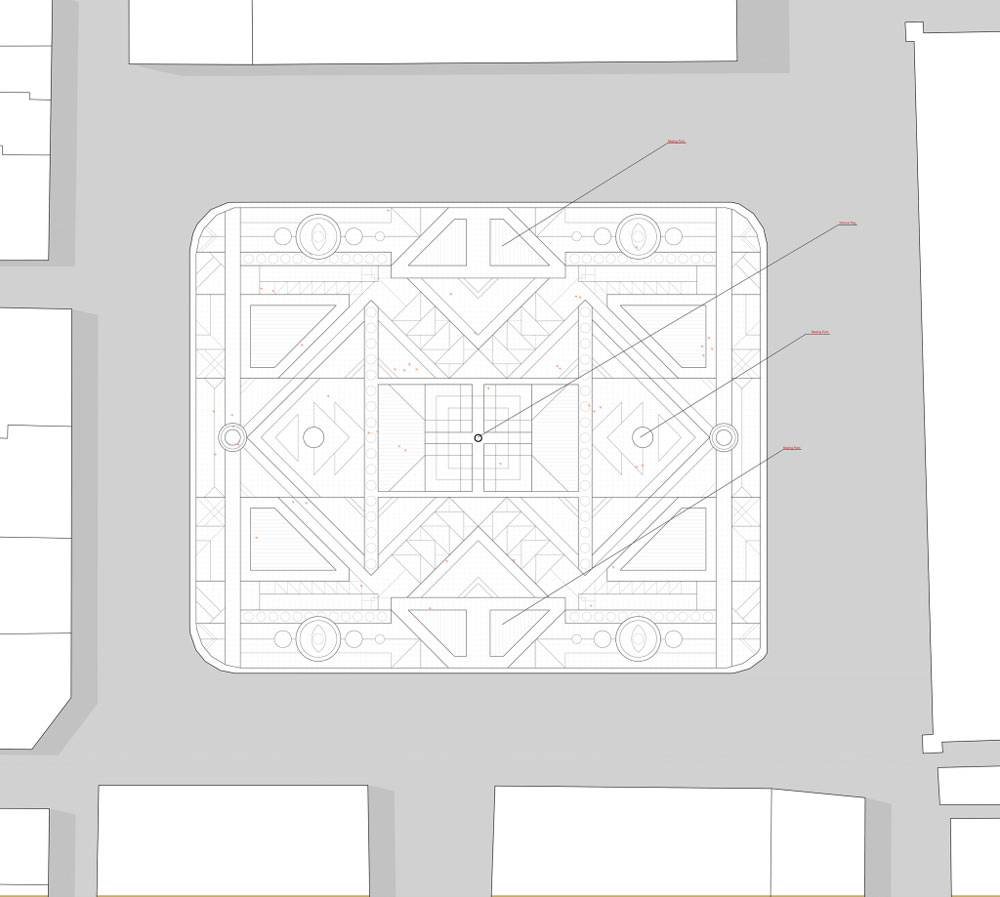
Style and Polity in conversation with Benjamin A. Bross, an Assistant Professor of architecture and an urban historian at the University of Illinois, at Urbana-Champaign, discusses “Mexico City’s Zócalo: A History of a Constructed Spatial Identity,” San Martin de Hidalgo tequila’s featured title for the brand’s Fall 2022 Tequila Book Club.
In his recently published book, Bross utilizes the spatial history of the Zócalo (Plaza de la Constitución), the main square in Mexico City, to explain the emergence and evolution of Mexican identities over time. Bross traces how cultural, social, economic, and political forces shaped the Zócalo’s spatial identity and, in turn, how the Zócalo shaped and fostered new identities in return.
When asked whether he prefers tequila or mezcal, Bross, a Tapatío from Guadalajara, Jalisco said, “Yo soy Jaliscience,” adding that he considers himself a purist and prefers blanco tequila.
Like many Mexicans, he grew up in a household that appreciated tequila. Bross loves tequila and believes that “good tequila is never shot, it is sipped, enjoyed, and slowly vibed.” Bross said that he will never take a shot of tequila, adding that “I think it is an insult to the people who work very hard, from the jimadores who have to cut the piña down to the people who put it in the barrels, and the aging process. Tequila has to be sipped and preferably drank with someone whose company you enjoy.”

Style and Polity: Must city planners design communities with space for public protest in mind or should such space develop organically, by members of those communities?
Benjamin A. Bross: The short answer is no. It would be counterproductive to plan for spaces of the public realm designed for protests because the point of a protest is to disrupt the system and if you co-opt the energy behind protests, then you have defanged protests. You are taking away the whole point of disrupting city life or the state’s ability to operate and have rendered protests rather meaningless. I get a daily report of where the latest protests in Mexico City will be taking place, whether it is on Reforma or Avenida de los Insurgentes. One of the reasons why Mexico City has a culture of protests is because they want to generate discomfort in everyday life of the city. The Zócalo, like all public squares, was not born for protests or manifestations. It was born for other purposes and was generated for the most part during the pre-Hispanic period as a marketplace.
If you design a specific space for protests, what you are really saying is “I don’t really want to be bothered with this [protests], so I am going to put them [protests] in a specific place where I can say ‘hey you have that space you can protest but I can go ahead and live my life and not be bothered by your protest’, when in fact the whole point of the protest is to create discomfort.”
That does not mean that we do not have public realm spaces whose core purpose should be for all of the different manifestations of public life. Like for the Zócalo; to enjoy pre-Hispanic dances, to have an esquite in the afternoon, a tequila as you are walking around, a concert. When the public realm is formed and enriched by enjoyable activities, these rituals generate a sense of identity and shapes who we are because rituals are carried on from generation to generation. That is the kind of space that is the most adequate for protests. Those spaces that are meant to be celebratory must also be spaces that are the pressure release valves of society.
Style and Polity: Today, many conversations on polity, social engagement, or protests occur online. Must Spatial Identity be physical?
Benjamin A. Bross: There are a few writers who have engaged in this analysis like Manuel Castells who talked about “space and flows,” the digital revolution, the question of space and time, and the implications of being able to converse with a friend in Buenos Aires from an internet café in Accra as if you were sitting together.
This is a complex question, particularly in the digital revolution and with the technology now available to us, protesting has become anonymous. I can create an account on a social media platform and protest about anything I want without being verified, as long as I create a valid email with a pseudonym. Ultimately, I’m sure many states shut down accounts and social media platforms. You’re getting at a virtual collective which has allowed among other things, cancel culture, because thousands of people that seemingly agreed on a subject target a third party.
The question is not about legitimacy, rather how effective will it be in the long-term? Ultimately there will be fatigue and there will be a moment as we turn towards physicality and social activity, particularly post-COVID where we will want to be associated with people. The digital world can ultimately be shut off. Whereas the physical presence of people in spaces is not anonymous. The collective whole makes itself present. Yes, there is a bit of comfort in quasi- or almost anonymity of being one of tens of thousands, but it is still the physical body in space. It will be hard for the digital world to replace physicality, because it is a verifiable existence of people engaging in activities. The easiest thing that can happen to most states is the turn towards digital media for social protesting because an entire group can be easily shut off. Ultimately, people have to take to the public realm and make themselves physically present because the digital media is, after all, virtual.
When we talk about spatial identity, there is a space. Philosophers from various disciplines and cultures including the pre-Socratic Greeks, Buddhists, and Taosists have discussed space and how to define it. Most everyone at some point has struggled with the question “What is space?”.
When we ask the question on spatial identity, one can go back and think about what Henri Lefebvre talked about; but, space is ultimately a mental representation. Yes, it may be physical and real in the sense that it is tactile or has dimensions. But, the moment I say a word and it evokes a spatial experience in your mind it is already a space, and it very well is a mental construct. But it is a space, nonetheless.
There is no denying that those are actual spatial experiences revolving in your mind, so they have an identity. Does it need to be a physical space, one that is haptic, meaning that it is tactile or that we need to experience it with our physical presence?
From the point of view of spatial identity in the sense that it can be shared with others outside of our own mental constructs, yes, but within our own mental constructs, no. Spatial identity, is after all from my point of view, mentally constructed, and that is the beauty of personal experience.

Style and Polity: Which digital or online properties would you consider to be ideal spaces for public protests?
Benjamin A. Bross: I think they all are useful; I do not think there is any that is particularly better than others. I am a deep believer in the first amendment of the United States. Freedom of speech is the cornerstone of a true democratic society, including speech that may be considered distasteful. This is important because distasteful speech may be distasteful to me, but it might not be to you. One need not agree with others’ speech, and I certainly do not need to vote in favor of it. Yet, even the most distasteful speech has a right to be heard, as long as it does not call for outright explicit physical violence against anyone or any group.
I am a strong believer that the less edited social media is, the better. Meaning that it is a marketplace of open conversations that are very often uncomfortable but necessary. The moment a [social media] platform starts to edit and curate people’s thoughts, subversive movements arise that become underground and therefore, we do not know what the cancers are that are starting to propagate.
That’s my worry. I rather know what people are saying and take them on in the public realm and say, “This is why you are wrong, or this is where I disagree with you” rather than say “your speech is edited because I do not like it. Speech should be met with more speech, not less.” Having said that, Instagram, TikTok, and other social media platforms, are ultimately private companies and when they start to curate content, they should be stripped of their protections: you cannot have it both ways; curate content and then say, “I am protected by the current legislation which prevents me from being sued.” I believe that they are private enterprises, and they are entitled to do as they see fit in their business model. But the inverse of that is that if you openly curate content then you become responsible for it.
 Presented by San Martin de Hidalgo Tequila
Presented by San Martin de Hidalgo Tequila
– Norma Karina Odunewu


Leave a Reply